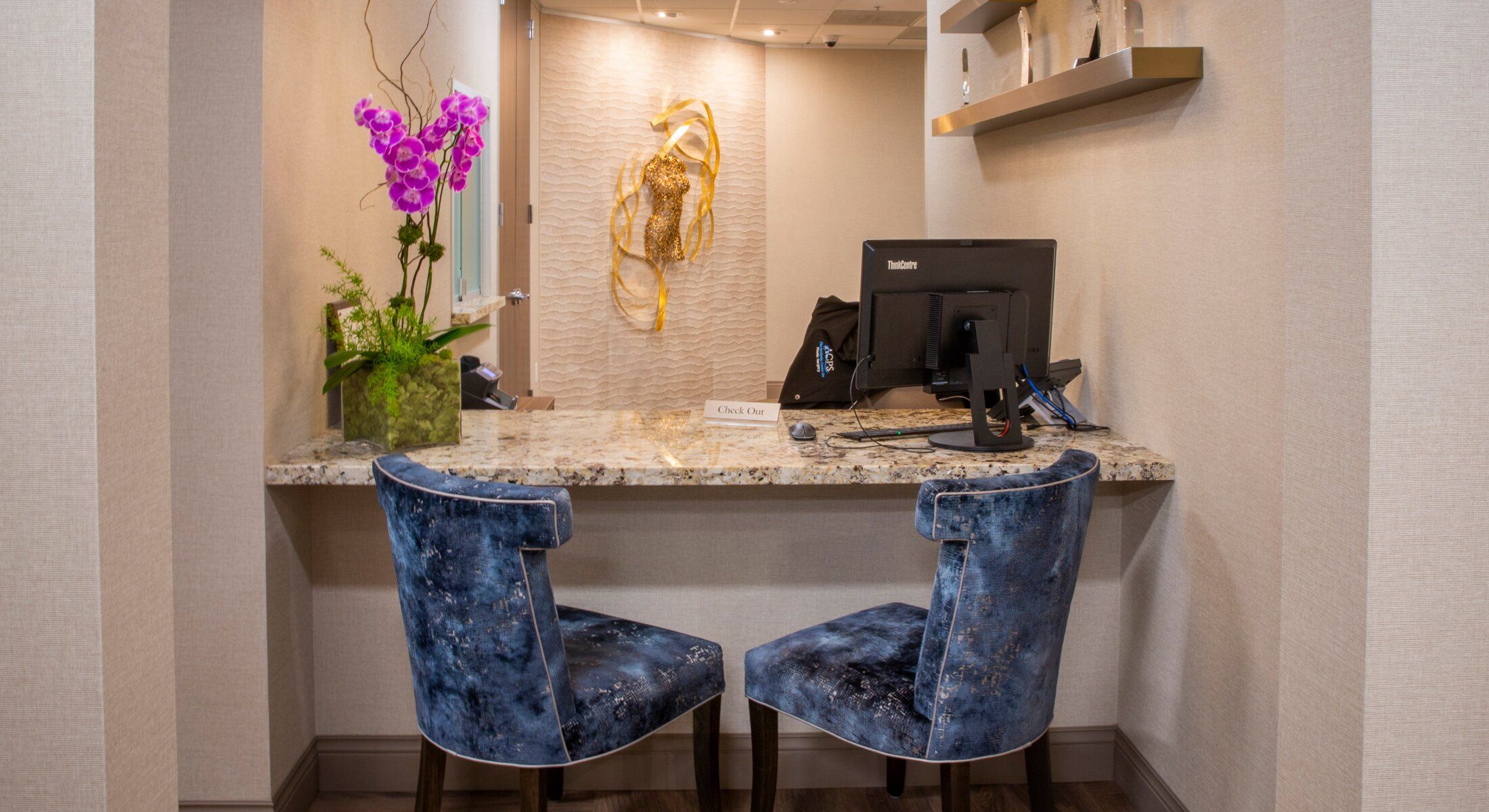




When considering a facelift, the two main techniques you might come across are the SMAS facelift and the Deep Plane facelift. If you're wondering what the differences are and how to know which to choose, you've come to the right place. Both procedures target the lower face but differ in technique and results. In this article, you will learn about the specifics of each method, their benefits, and how to choose the one that fits your needs.
Rejuvenating one's face is not solely about achieving a younger look. It also plays an important role in boosting self-confidence. Various facelift procedures are available to profoundly improve your looks, with the SMAS facelift and Deep Plane facelift being two of the most prevalent techniques.
Both SMAS and Deep Plane facelifts focus on rejuvenating the facial area below the eyes, specifically targeting sagging skin, unwanted fat accumulations, loose jowls, and depleted volume in the cheeks to restore a more defined facial structure. The primary difference between them lies in their approach: while a SMAS lift concentrates on repositioning just the superficial muscular layer for enhancement, a deep plane technique addresses both this layer as well as other deeper structures by lifting everything together for more comprehensive results.
The deep plane method is particularly suited for those with advanced signs of aging, such as noticeable skin laxity or severe folds, since it provides significant improvements that include elevating facial features and neck contours. Knowing these key distinctions can guide individuals to decide which technique best meets their cosmetic goals.
Introduced in the 1970s, the SMAS facelift brought about a paradigm shift in cosmetic surgery by concentrating on deeper structures for outcomes that appear more natural. This method focuses on lifting and repositioning not just the skin but also the Superficial Muscular Aponeurotic System (SMAS), a layer of fibrous and fatty elements.
The procedure involves surgically enhancing facial contours by manipulating tissue beneath the skin and muscles. By strategically folding and tightening the SMAS layer without detaching associated ligaments, the technique rejuvenates the skin's texture, diminishes sagging, and promotes a restoration of youthful vigor over an approximately three—to four-hour period under closely observed anesthesia.
One notable benefit of this type of facelift is its adaptability to suit individual aesthetic preferences while maintaining unique alterations per case. The incisions are discreetly placed within hairline confines or around ear regions to effectively obscure potential scarring. Given its durability, with effects lasting between five and ten years, it stands as an appealing corrective measure against moderate aging signs for many seeking improvements in their appearance through surgery.
The deep plane facelift operates on the deeper tissues of the face to yield results that are both natural in appearance and durable over time. This differs from a SMAS facelift, which concentrates primarily on more superficial layers. Instead, the deep plane method engages with deeper structures for an extensive treatment scope. It enhances areas such as the lower face, neck, midface, and cheeks for a substantial lifting effect.
During this procedure, surgeons carefully release certain facial ligaments, allowing them to reposition underlying muscles along with these deeper tissues. Addressing these foundational layers results in greater cheek definition and an improved jawline silhouette. This technique elevates the entire SMAS layer, resulting in significant rejuvenation and exceptionally natural outcomes.
An important advantage of opting for a deep plane facelift is its durability compared to other methods. It can maintain its effects between 10 to 15 years, while traditional SMAS lifts might only last five to seven years. As such, it's particularly well-suited for older patients who are managing severe skin laxity or pronounced wrinkles within their facial features—an approach widely recognized by professionals as consistently effective at providing lasting excellence in results.
In the realm of facelifts, both SMAS and deep plane lifts necessitate incisions strategically placed in less visible areas like the hairline or around the ears to minimize scarring visibility. Despite this similarity, there is a marked contrast in how invasive these techniques are.
The deep plane lift goes beyond superficial manipulation by cutting through deeper layers of the face to adjust muscles and connective tissue for an all-encompassing rejuvenation. This starkly contrasts with a standard SMAS facelift that targets only surface-level tissues. The sophistication required for executing a successful deep plane technique makes it more intricate and time-consuming and augments its potency as a surgical intervention.
Many plastic surgeons adopt refined methods with careful consideration, such as using angled cuts during surgery or avoiding thermal damage near delicate regions like hair follicles. These practices serve to curb complications, including alopecia. Such meticulous approaches amplify patient outcomes after these procedures. Acquiring knowledge about each procedure's distinct attributes enables individuals considering surgery to make informed decisions on which type of facelift will best meet their aesthetic goals.
Recovery time is a significant consideration for patients deciding between a SMAS facelift and a Deep Plane facelift. The recovery period following a SMAS facelift typically spans about one week, but the more intensive nature of the Deep Plane technique may necessitate an extended recuperation. In the initial weeks after surgery, wearing both compression garments and neck supports is important to help control swelling effectively.
For those who have undergone a Deep Plane facelift, returning to normal work activities can usually be expected roughly two weeks post-surgery, contingent upon individual healing progress and job demands. Nevertheless, engaging in heavy physical activity should be avoided for no less than six weeks post-operation to ensure proper healing. It's common for bruising and swelling to persist during this time. These symptoms often diminish within several weeks though some individuals experience prolonged cheek swelling that can last up months or even as long as one year.
Adhering meticulously to your surgeon's instructions after your operation plays an essential role in securing optimal outcomes from your surgery. Having insight into what recovery entails aids in making an educated choice regarding which type of facelift best aligns with your personal requirements and lifestyle preferences.
For individuals contemplating facelift surgery, securing results that appear natural is often paramount. The deep plane facelift technique stands out in delivering more naturally perceived outcomes due to its method of elevating the deeper layers of facial tissue. This approach tends to yield enduring and authentic-looking effects when contrasted with SMAS facelifts.
The outcome effectiveness of a deep plane facelift can vary depending on various personal factors such as unique facial structure, age-related changes, and skin resilience. Known for refining facial contours subtly yet effectively, this technique offers a rejuvenated look without drastic change—this contributes to its preference among those seeking significant but not overly noticeable enhancements. The longevity associated with the procedure also adds value. It has been noted that the improvements from a deep plane lift can persist anywhere between 10 and 15 years.
In terms of aesthetic advantages, one notable aspect is that scarring tends to be less prominent following a deep-plane lift compared to other methods—which supports an untouched appearance post-surgery. As someone looking forward to a noticeable yet believable cosmetic transformation through surgery, they might find their ideal solution within the confines of this specialized lifting process. It's important for prospective patients to appreciate these benefits while deciding upon which surgical route could best fulfill their aspirations for achieving genuinely convincing beauty refinement through a facelift operation.
Every surgical procedure, including facelifts, carries the possibility of risks and potential complications. When performing a deep plane facelift, surgeons must be exceptionally careful with facial nerves to preserve facial function. The good news is that injuries to facial nerves during facelift surgery are quite rare, occurring in less than 1% of all cases.
Although uncommon, hematoma formation occurs in fewer than 2% of deep plane face lift procedures and demands immediate attention to avoid tissue damage. Infections following a facelift procedure also have a low occurrence rate, at under 1%. Skin necrosis after such surgeries can arise, but it typically affects no more than 3% of patients and is most prevalent behind the ears.
Additional concerns include encountering pixie-ear deformity resulting from too much tension when closing the skin post-surgery and First bite syndrome, which may result from harm inflicted on sympathetic nerves near the parotid gland during surgery. Being aware of these risk factors aids individuals considering this type of surgery in making informed decisions while preparing for any possible complications that might arise.
Choosing the right facelift technique depends on various factors such as age, skin quality, and specific rejuvenation goals. Those with significant sagging skin looking to regain a more youthful contour may be prime candidates for a deep plane facelift. In contrast, younger patients wishing to tackle early signs of aging, like jowls, might find that a SMAS (Superficial Musculoaponeurotic System) facelift suits their needs better.
When determining the ideal approach for facelift surgery, several elements come into play, including one's structural facial anatomy, level of skin elasticity, and lifestyle habits. It is crucial for anyone considering this form of cosmetic procedure to maintain good overall health and avoid smoking. During initial consultations with their surgeon, patients should openly share details about their lifestyle, relevant medical history, and any medications they are currently taking, as these factors could affect the surgery's outcomes.
Both procedures aim to correct aging signs on the face, but the severity of these signs will influence the choice between a deep plane facelift and a SMAS facelift. The deep plane technique is more suited for those needing extensive lifting and rejuvenation, while the SMAS method is effective for less extensive alterations.
To identify the optimal surgical plan tailored to each case, individuals should work closely with experienced plastic surgeons. This collaborative approach ensures the best possible outcome, focusing on the patient's safety and well-being throughout the entire process. By understanding the unique benefits and limitations of each facelift technique, patients can make informed decisions that align with their aesthetic goals and health considerations.
Meeting with a facial plastic surgeon who is board-certified is an essential component of the process when considering a facelift. This expert's guidance can be incredibly beneficial in evaluating your options and customizing the surgery to meet your unique requirements. Bringing along questions as well as details about your medical history will contribute to a thorough discussion during this evaluation.
Throughout this meeting, the plastic surgeon will elaborate on each surgical alternative while assessing its advantages and limitations relative to your particular situation. By doing so, they ensure that the chosen technique for the procedure harmonizes with both what you wish to achieve aesthetically and any pertinent health factors. It may also prove advantageous to consult multiple surgeons for varied viewpoints, reinforcing your assurance in selecting the one most suited for you.
Selecting an appropriate surgeon involves finding someone technically proficient and empathetic toward realizing the vision you have set out for yourself through collaborative efforts.
Engaging with a certified practitioner in plastic surgery guarantees that time and resources are geared toward enhancing future physical appearance satisfaction stemming from the surgery undertaken.
Deciding on a facelift technique, specifically between the SMAS and Deep Plane facelifts, necessitates an appreciation of each method's distinct benefits. The SMAS facelift elevates the superficial musculoaponeurotic system for a subtle lift suitable for younger patients aiming to tackle initial aging signs. Conversely, by focusing beneath this layer, the Deep Plane facelift offers more extensive and enduring effects.
Each approach comes with its own set of recovery periods and potential risks while promising marked improvements in facial aesthetics. For outcomes that appear more natural and are typically longer-lasting, many opt for deep plane techniques as they provide significant enhancements. Yet it is essential to consider individual variables such as one's age, skin health, and lifestyle when making this choice.
To sum up these considerations about rejuvenation through surgery: An informed decision-making process includes understanding differences between types of facelifts—SMAS versus Deep Plane—and speaking with a plastic surgeon who is board certified will assist you in selecting which procedure aligns most closely with your desired look based on personal factors. As you move forward confidently towards achieving renewal in appearance, commit yourself fully to exploring all possibilities leading up to a refreshed visage that awaits those who make decisions backed by knowledge and expertise.
Dr. Paul F. Fortes, a distinguished, dual-board-certified plastic surgeon based in Houston, TX, offers an elite standard of care defined by a rare blend of artistic sensibility and scientific rigor. Dr. Fortes believes superior aesthetic results are never "off the rack," but are meticulously customized and individually crafted to meet each patient’s unique vision. He approaches every procedure with the precision of an artisan, ensuring the safest, most harmonious, and exquisitely detailed outcomes that stand apart from the ordinary.
Trusting your aesthetic goals to Dr. Fortes means placing your care in the hands of a provider with impeccable credentials. A graduate of Rice University (Magna Cum Laude) and an inductee of the exclusive Alpha Omega Alpha Honor Medical Society, he completed an extensive eight-year surgical residency, including three years of specialized plastic surgery training at the prestigious Northwestern Medical Center in Chicago. Recognized for over a decade as a Texas Super Doctor, Dr. Fortes affirms his position as a preeminent leader, solidifying him as THE trusted expert for those seeking truly transformative, beautiful, and enduring results.
